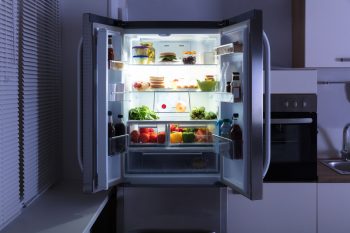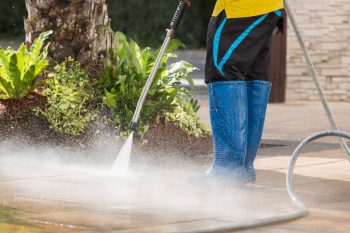
Defrosting your fridge ice maker is an essential part of maintaining your appliance and ensuring it continues to operate efficiently. If you’ve noticed that your ice maker isn’t producing as much ice as it used to, or the ice cubes are smaller or misshapen, it might be time to defrost it. In this comprehensive guide, we’ll walk you through the steps to defrost a fridge ice maker and provide you with tips and tricks to make the process easier.
To defrost a fridge ice maker, first unplug the refrigerator. Remove the ice bucket to access the ice maker, then press the reset button on the ice maker for 5 seconds. If the ice maker doesn’t defrost, run a forced defrost cycle which usually takes around 30 minutes. Wipe away any excess water with a towel and reinstall the ice bucket to catch any drips. Remember, safety is paramount, so always disconnect power and avoid using sharp objects. Defrost your ice maker monthly if used regularly, or every three months if used less frequently.
Signs Your Ice Maker Needs Defrosting
Before we dive into the defrosting process, it’s important to know when your ice maker needs defrosting. The following signs can indicate a need for defrosting:
- Reduced ice production: If your ice maker isn’t producing as much ice as it used to, it might be due to ice buildup within the unit.
- Small or misshapen ice cubes: Ice buildup in the ice tray or other components can restrict the flow of water, resulting in smaller or oddly-shaped ice cubes.
- Ice maker freezing over: Ice buildup in the ice maker compartment is a clear sign that it’s time to defrost.
- Ice buildup on condenser coils: This can affect the efficiency of your refrigerator.
- Water leaks: If water is leaking from your ice maker, it could be due to ice blocking the water flow.
Why Defrost Your Ice Maker Regularly?
Regularly defrosting your ice maker is important for several reasons:
- Efficiency: Ice buildup can insulate the refrigerator, causing it to work harder to maintain the desired temperature. This can increase your energy consumption and lead to higher electricity bills.
- Optimal performance: Ice accumulation can cause performance issues, such as slow ice production, no ice production, or a frozen-over ice maker.
- Space: Ice buildup can take up space in your freezer, reducing the available storage area for your frozen items.
- Maintenance: Regular defrosting can help prevent potential damage to the ice maker and other components of the refrigerator.
- Hygiene: Defrosting provides an opportunity to clean the ice maker and other parts of the refrigerator, ensuring a hygienic environment for food storage.
The Defrosting Process
Now that we’ve covered the importance of defrosting your ice maker, let’s dive into the defrosting process itself. Here are the steps you need to follow:
- Unplug the refrigerator: Always unplug your refrigerator before you start the defrosting process to ensure your safety.
- Remove the ice bucket: This gives you access to the ice maker.
- Reset the ice maker: Locate the reset button on the ice maker and press it down for 5 seconds.
- Run a forced defrost cycle: If the ice maker doesn’t defrost after resetting, you may need to run a forced defrost cycle. This process usually takes around 30 minutes.
- Wipe away excess water: Once the defrost cycle is complete, wipe away any excess water with a towel.
- Reinstall the ice bucket: Put the ice bucket back in place to collect any water or ice that may be released during the defrosting process.
Tools Needed for Defrosting
You will need a few basic tools to defrost your fridge ice maker:
- Hairdryer or heat gun: To speed up the defrosting process.
- Towels or absorbent mat: To soak up any water that drips down during defrosting.
- Plastic scraper or spatula: To remove any remaining ice.
- Soft cloth or sponge: For cleaning the ice maker after defrosting.
Safety Precautions
Safety should always be your priority when defrosting your ice maker. Follow these precautions to prevent any accidents or damage:
- Disconnect power: Always unplug the refrigerator before starting the defrosting process.
- Wear protective gear: Use gloves and safety goggles to protect yourself from ice shards.
- Avoid sharp objects: Never use sharp objects like knives to remove ice, as they can damage the unit.
- Be careful with electricity: If you’re using a hairdryer, keep it away from water to prevent electrical shock.
Frequency of Defrosting
The frequency of defrosting your fridge ice maker depends on how often you use it. If you use your ice maker regularly, you should defrost it once a month. If you don’t use it often, you should defrost it every three months. However, some sources suggest defrosting at least once a year.
By regularly defrosting your fridge ice maker, you can ensure it operates efficiently and prolong its lifespan. So, the next time your ice maker starts underperforming, you know what to do!
Frequently Asked Questions
How long does it take to defrost a fridge ice maker?
The defrosting process typically takes around 30 minutes. However, the exact time can vary depending on the amount of ice buildup and the specific model of your ice maker.
What should I do if my ice maker still doesn’t work properly after defrosting?
If your ice maker is still not working properly after defrosting, there could be a more serious issue. You may need to consult your refrigerator’s manual or contact a professional appliance repair service.
Can I use a hairdryer to speed up the defrosting process?
Yes, a hairdryer or heat gun can be used to speed up the defrosting process. However, you should be careful to keep it away from water to prevent electrical shock.
Is it necessary to clean the ice maker after defrosting?
Yes, it’s a good idea to clean the ice maker after defrosting. This helps maintain a hygienic environment for ice production. You can use a soft cloth or sponge for this purpose.
What happens if I don’t defrost my ice maker regularly?
If you don’t defrost your ice maker regularly, it can lead to ice buildup which can affect the efficiency of your refrigerator, cause performance issues, reduce the available storage area in your freezer, and potentially cause damage to the ice maker and other components of the refrigerator.











